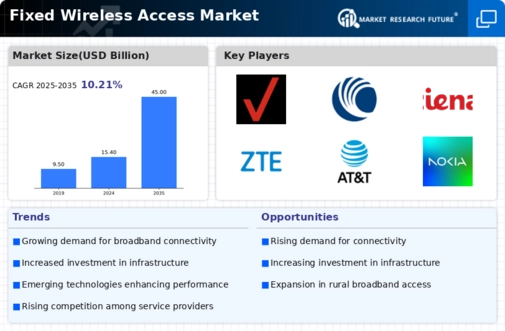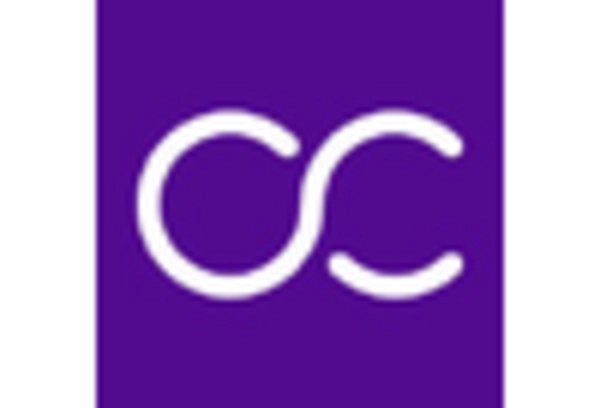Growing Adoption of IoT Devices
The proliferation of Internet of Things (IoT) devices is significantly influencing the Fixed Wireless Access Market. As more devices become interconnected, the demand for reliable and high-speed internet connectivity escalates. Current projections indicate that the number of IoT devices could reach 30 billion by 2030, necessitating robust network solutions. Fixed wireless access provides the necessary bandwidth and low latency required for seamless IoT operations. Consequently, the Fixed Wireless Access Market is poised to capitalize on this trend, offering solutions that cater to the unique connectivity needs of IoT applications across various sectors.
Cost-Effectiveness of Deployment
The Fixed Wireless Access Market benefits from the cost-effectiveness associated with deploying wireless infrastructure. Compared to traditional wired solutions, fixed wireless systems can be installed more rapidly and with lower capital expenditure. This is particularly advantageous in regions where the installation of fiber optics is prohibitively expensive. Recent estimates suggest that fixed wireless solutions can reduce deployment costs by up to 50%, making them an attractive option for service providers. As a result, the Fixed Wireless Access Market is likely to see increased adoption as operators seek to expand their service offerings while managing costs effectively.
Shift Towards Remote Work and Learning
The shift towards remote work and online learning is reshaping the landscape of the Fixed Wireless Access Market. As organizations and educational institutions adapt to new operational models, the demand for reliable internet connectivity has surged. Data suggests that nearly 70% of companies are now offering remote work options, which necessitates robust internet solutions. Fixed wireless access provides a viable alternative to traditional broadband, particularly in areas where wired connections are insufficient. This trend is expected to continue, further propelling the Fixed Wireless Access Market as it addresses the evolving connectivity needs of a remote workforce and student population.
Increased Demand for High-Speed Internet
The Fixed Wireless Access Market is experiencing a surge in demand for high-speed internet connectivity. As more individuals and businesses rely on digital services, the need for robust internet solutions has intensified. Recent data indicates that approximately 60% of households now prioritize high-speed internet access, driving investments in fixed wireless technologies. This trend is particularly pronounced in rural and underserved areas, where traditional wired infrastructure is often lacking. The Fixed Wireless Access Market is thus positioned to meet this demand by providing efficient and cost-effective solutions that enhance connectivity and support the growing digital economy.
Regulatory Support for Wireless Technologies
Regulatory frameworks are increasingly favoring the deployment of wireless technologies, which is beneficial for the Fixed Wireless Access Market. Governments are recognizing the importance of enhancing connectivity and are implementing policies that support the expansion of wireless networks. For instance, spectrum allocation for fixed wireless services has been streamlined in several regions, facilitating faster deployment. This regulatory support is likely to encourage investment in fixed wireless infrastructure, thereby driving growth in the Fixed Wireless Access Market. As policies evolve, the industry may witness a more favorable environment for innovation and expansion.


















Leave a Comment